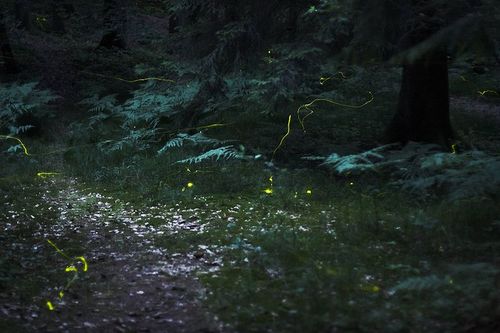In the NY Times article “Blink Twice if You Like Me,” journalist Carl Zimmer interviews Sara Lewis, an evolutionary ecologist from Tufts University who has spent the past 16 years studying the evolutionary forces behind fireflies. Originally, the glow of fireflies was merely a way for larvae to ward off predators, letting them know of the bitter, unpleasant chemicals they gave off and lessening the chance that they would become someone’s next meal. However, over time, some of the over 2000 species of fireflies evolved to keep their glowing ability through adulthood. The blinks we see in fields and forests during the summer are now a mating ritual, as the males fly about blinking in a species-specific language trying to attract the females sitting on the ground. Males add their own “embellishments” to the patterns, hoping to stand out amongst an overwhelmingly large male population all competing for the same small number of females.
Dr. Lewis’ research has found that females notice these embellishments and in fact are often drawn to males with more conspicuous patterns of flashes. The exact preferences vary by species: some prefer longer pulses while others prefer faster pulse-rates. Furthermore, Dr. Lewis and her team has found that a firefly’s glow expends very little energy. So if females prefer faster or longer pulses and flashing has a low energy cost, why haven’t fireflies continued to develop faster and longer pulses to attract more females? Wouldn’t the fastest and longest pulsing fireflies always produce the most offspring?
The answer to this puzzle may lie in another predatory species of fireflies — Photuris — that preys on other fireflies and is attracted to the same pulses that the females are. Thus, as males develop more conspicuous patterns of flashes, they become far more likely to become the prey of Photuris, who can kill several fireflies in one night. Ironically, the trait once developed to dissuade predators has now become a chief means of attracting them. The natural selection of fireflies, then, becomes a balancing act between attracting mates and avoiding predators. At least in areas where Photuris are active, it seems selection is favoring less-conspicuous patterns so as to avoid becoming a meal.
To read more about Dr. Lewis’ work with fireflies, including why females may have evolved to prefer more conspicuous flashes, be sure to read the full article on the NY Times‘ Web site.


